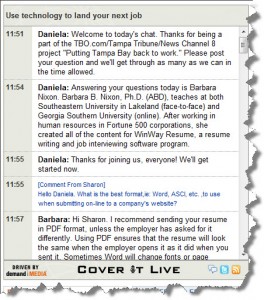Our One Week of Twitter assignment begins on Monday, June 7, and will end at midnight on June 13. Your blog post about this experience count as your Topic of the Week for Week Five.
First, Learn a Bit About Twitter
- Listen to Laura Fitton discuss Twitter for Business.
- Listen to my Twitter: What’s in it for me? presentation.
- Read 10.5 Ways for PR Students to Get the Most Out of Twitter.
Setting Up Your Twitter Account
- Go to Twitter. Click Get Started, and sign up. I prefer it if you use some version of your first and last name as your Twitter ID. (Avoid putting numbers in your Twitter ID, or you may appear like a spammer.)
- Upload a photo or avatar.
- Write a brief (160-character or fewer) bio. It’s good to mention that you’re a PR student. Consider mentioning your university.
- Send a tweet saying “I’m a student in @barbaranixon’s #PRCA3330/#PRCA2330 class”. (Use the correct number for your class.) Be sure to include the #xxx1234 indicator, with no spaces between the hashtag (#), letters and numbers.
- If you haven’t already done so, complete my form that tells me your Twitter username before midnight on Monday, June 7.
Setting Up Your Following List
- Follow at least 20 (why not all?) of the people or organizations in my Twitter Starter Pack for PR Students.
- Visit your class’ list at TweepML: PRCA 2330 or PRCA 3330. Scroll down to the bottom of the page to easily follow all the people on the list. (I created these lists on Tuesday, June 8, at 3 p.m. Only a few people had given me their addresses on time. I will update these lists again on Wednesday.)
- Over the course of the next week, send at least twenty tweets (Twitter messages of 140 characters or less). Tip: Rather than tweeting that you’re having ramen for lunch, instead consider what might be of interest to your classmates and followers. Perhaps point others to something interesting or funny you read online. Share a fact you learned in a class. Maybe you could even pose a question that you’d like others to answer.
Additional Information
- Review my tips on how college students can use Twitter to their advantage and Choosing Whom to Follow on Twitter: My Strategy.
- Review Prof. Sam Bradley’s College Student’s Guide: Twitter 101.
- I find using the web interface for Twitter to be clunky. I prefer using TweetDeck, a free Adobe Air app that works great on PCs and Macs. TweetDeck makes it really easy to send URLs via Twitter, as it automatically shortens them for you.
- I’ll occasionally post information on Twitter and use the hashtag for your class (either #PRCA2330 or #PRCA3330).By using this hashtag, I’m indicating that I want students in this class to pay special attention to the tweet.
- OPTIONAL: If you’d like to publicize your blog posts via Twitter, you can it automatically in WordPress.
Blog About Your Experience
After the week is over, add a 300-word (minimum) post to your blog about the experience and what you got out of it. Include a link to your Twitter profile (here’s mine). Be sure to include at least one way you might find value in continuing your account in Twitter. Your blog post about this experience count as your Topic of the Week for Week Four Five.
Questions? Just send me a DM (direct message) or an @ (reply) in Twitter!
NOTE: Many thanks to Kaye Sweetser and Karen Russell for their ideas prompting this assignment.





